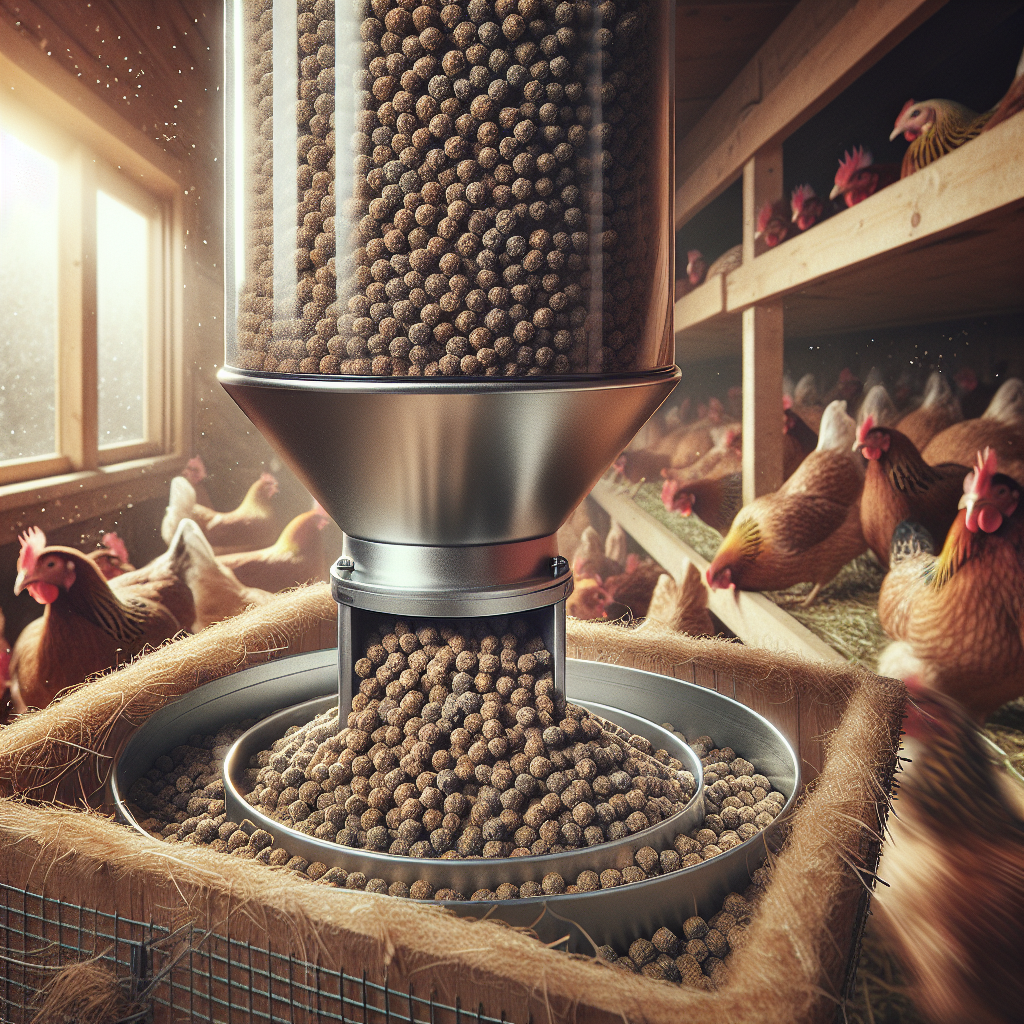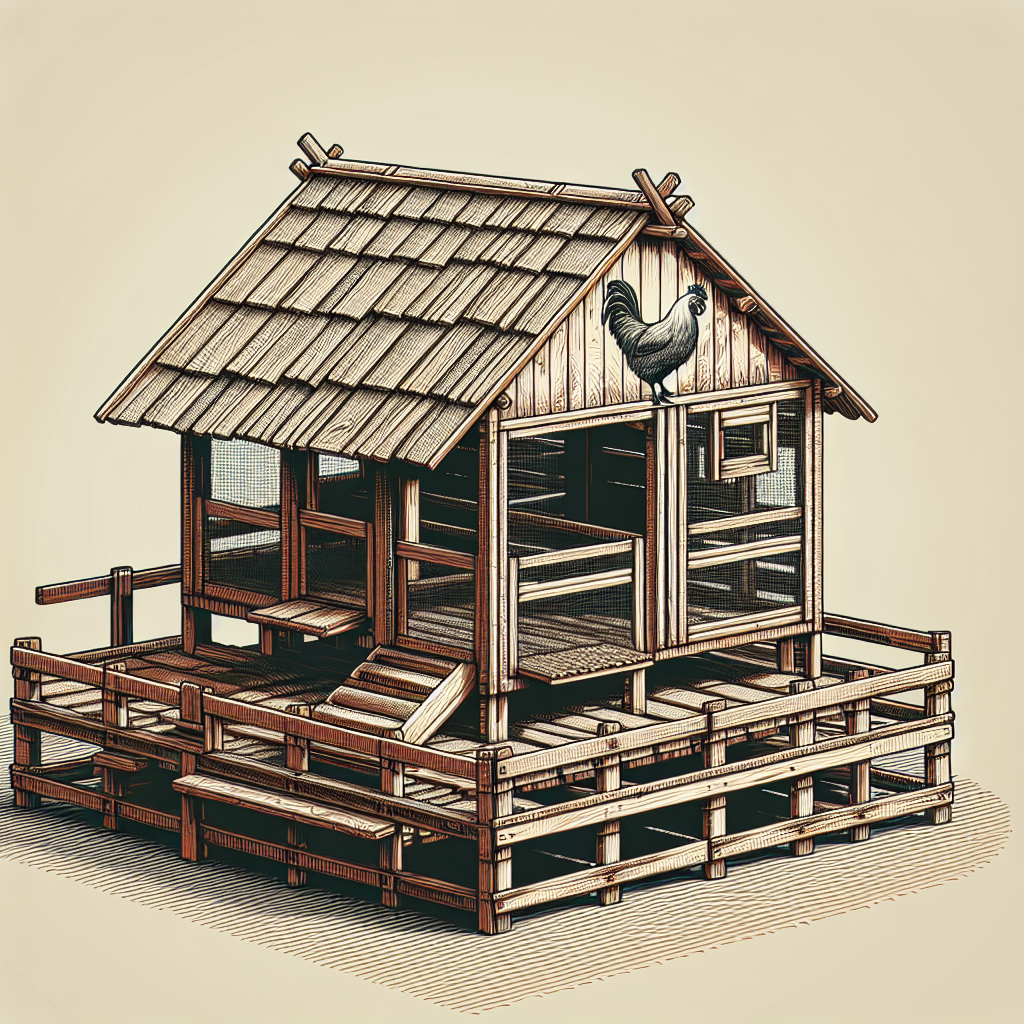In the world of chicken coop designs, finding the perfect materials is crucial to ensure a safe and comfortable environment for your feathered friends. From sturdy woods to durable metals, the right choice can make all the difference in the functionality and longevity of your coop. Whether you opt for a traditional wooden coop or a modern metal design, each material has its own unique benefits and considerations. Join us as we explore the wide array of materials available and discover which ones are best suited for different chicken coop designs.
Wood
Advantages of using wood
Wood is a versatile and popular material for chicken coops for several reasons. First and foremost, it is a natural and renewable resource, making it an environmentally friendly choice. Wood also provides excellent insulation, helping to keep your chickens warm in the winter and cool in the summer. It is also a sturdy and durable material, capable of withstanding the daily wear and tear that comes with housing chickens. Additionally, wood is aesthetically pleasing and can easily blend in with your backyard or farm setting.
Types of wood commonly used
When it comes to chicken coops, there are several types of wood that are commonly used. Some popular choices include cedar, pine, and fir. Cedar wood has natural oils that act as a deterrent against insects and decay, making it a great choice for chicken coop construction. Pine is a budget-friendly option that is widely available and easy to work with. Fir is known for its strength and durability, making it suitable for larger chicken coop structures.
Considerations when using wood
While wood is a versatile material for chicken coops, there are a few considerations to keep in mind. Firstly, it is important to choose wood that has been treated or naturally resistant to rot, as it will be exposed to moisture from chicken droppings and weather conditions. Regular maintenance, such as resealing or staining, can also help prolong the lifespan of the wood. Another consideration is predator protection. Wood, especially softer varieties, may be easier for predators like raccoons or rats to chew through compared to other materials. Reinforcing vulnerable areas with hardware cloth or other protective measures can help minimize this risk.
Metal
Advantages of using metal
Metal is another popular material choice for chicken coops, offering several advantages for chicken owners. One of the primary benefits of using metal is its durability and strength. Metal coops can withstand harsh weather conditions and are highly resistant to pests and predators. They are also easy to clean and maintain, as metal surfaces can be easily wiped down and are less likely to retain odors. Metal coops also provide excellent airflow, promoting good ventilation for the chickens.
Types of metal commonly used
There are various types of metal commonly used in chicken coop construction. Steel and aluminum are two popular choices. Steel is known for its strength and durability, making it suitable for larger, more permanent structures. Aluminum, on the other hand, is lightweight and corrosion-resistant, making it a good option for portable or movable coops. Galvanized metal, which is coated with zinc to prevent rust, is often used to enhance the longevity and durability of chicken coops.
Considerations when using metal
While metal offers several advantages, there are a few considerations to take into account. Firstly, metal can heat up quickly in direct sunlight, so it is important to provide adequate shade or insulation to prevent overheating. Additionally, metal coops may not provide as much insulation as other materials such as wood. This can be addressed by using insulation materials or considering the climate in which the coop will be located. Lastly, metal surfaces can become slippery when wet, so it is important to incorporate non-slip flooring or provide traction for your chickens to prevent injuries.
Plastic
Advantages of using plastic
Plastic coops have gained popularity in recent years due to their versatility and low maintenance requirements. Plastic is lightweight, durable, and resistant to moisture, making it a suitable choice for outdoor chicken coops. Plastic coops are also easy to clean, as they can be hosed down or wiped clean without the worry of water damage. Additionally, plastic is not susceptible to rot or pest infestations, providing a longer lifespan compared to other materials.
Types of plastic commonly used
There are different types of plastic commonly used for chicken coops, including PVC (polyvinyl chloride) and HDPE (high-density polyethylene). PVC is lightweight, easy to work with, and resistant to chemicals and environmental factors. HDPE is a more durable plastic option, known for its strength and longevity. Both types of plastic are UV-resistant, ensuring that the coop remains intact even when exposed to direct sunlight for extended periods.
Considerations when using plastic
While plastic offers numerous advantages for chicken coop construction, there are a few considerations to keep in mind. Plastic may not provide the same level of insulation as wood or metal, so additional insulation measures may be necessary in colder climates. Plastic can also become brittle over time when exposed to extreme temperatures, so choosing a high-quality plastic and providing adequate shading or insulation can help mitigate this issue. It is also important to ensure that the plastic coop is well-ventilated to prevent excessive heat buildup.
Wire Mesh
Advantages of using wire mesh
Wire mesh is a versatile material that offers several advantages for chicken coop designs. Firstly, wire mesh provides superior ventilation, allowing air to flow freely and prevent the buildup of harmful ammonia fumes. It also allows for better visibility, allowing you to keep an eye on your chickens and ensuring their safety. Wire mesh is an effective barrier against predators, preventing them from gaining access to your coop. It is also a cost-effective material option for both small and large coops.
Types of wire mesh commonly used
There are various types of wire mesh commonly used in chicken coop construction. Galvanized hardware cloth is a popular choice due to its durability and resistance to corrosion. Welded wire mesh is another commonly used option, offering strength and stability. Chicken wire, although less secure, can be used as an economical choice for smaller coops or areas where predator risks are minimal.
Considerations when using wire mesh
While wire mesh is a beneficial material for chicken coops, there are considerations to keep in mind. The size of the wire mesh openings should be carefully chosen to prevent predators from squeezing through. Smaller mesh sizes, such as 1/2 inch or 1/4 inch, are recommended for increased security. It is also important to ensure that the wire mesh is securely fastened to the coop frame to prevent any gaps or weak points that could be exploited by predators. Regular maintenance, such as inspecting for any damage or wear, will help ensure the long-lasting effectiveness of wire mesh as a protective barrier.
Concrete
Advantages of using concrete
Concrete is a durable and long-lasting material that can be used for chicken coop foundations or flooring. Concrete provides a solid and secure base, preventing predators from burrowing beneath the coop. It is also resistant to moisture and can be easily cleaned, making it a hygienic option for housing chickens. Concrete floors are impervious to rot and pest infestations, contributing to a low-maintenance coop setup.
Considerations when using concrete
While concrete offers several advantages, there are a few considerations to keep in mind. Firstly, concrete can be cold, especially in colder climates, so providing additional insulation or bedding for your chickens is necessary. Ensuring proper drainage by incorporating a slight slope in the concrete floor will prevent water accumulation and potential flooding. When using concrete for the coop foundation, it is crucial to plan and construct it accurately during the initial setup, as it can be challenging to make changes or repairs once it is in place.
Brick
Advantages of using brick
Brick is a traditional and durable material that can add a touch of rustic charm to your chicken coop. It provides excellent insulation, helping to regulate temperature and keep your chickens comfortable throughout the year. Brick is also resistant to rot, pest infestations, and fire, ensuring a long-lasting and low-maintenance coop structure. It offers a strong barrier against predators, providing security and peace of mind for chicken owners.
Considerations when using brick
While brick offers numerous advantages, there are a few considerations to keep in mind. Building with brick can be labor-intensive and time-consuming, requiring skilled craftsmanship. It is important to ensure proper mortar application and structural stability during construction. Additionally, brick can be more expensive compared to other materials, so budget considerations should be taken into account. Assessing the climate and making appropriate insulation arrangements will help maximize the insulation benefits of brick and prevent temperature extremes inside the coop.
Straw
Advantages of using straw
Straw is a natural and readily available material that can serve multiple purposes in chicken coops. It is often used as bedding material, providing a soft and comfortable surface for chickens to walk and rest on. Straw also acts as an excellent insulator, helping to regulate coop temperature and provide additional warmth during colder months. It is highly absorbent and can absorb moisture and odors, contributing to a cleaner and more hygienic coop environment.
Considerations when using straw
While straw offers several advantages, there are considerations to keep in mind. Straw bedding requires regular cleaning and replacing to prevent a buildup of droppings and potential health hazards for the chickens. It should be monitored closely for mold or mildew growth, especially in humid climates. Additionally, straw can be flammable, so it is important to ensure proper ventilation and reduce any fire risks within the coop. Regular maintenance and replacement of straw bedding will help maintain a healthy and comfortable environment for your chickens.
Hay
Advantages of using hay
Hay is another popular bedding material for chicken coops, offering several advantages for both chicken and coop hygiene. Hay provides a soft and comfortable surface for chickens to rest on, promoting their well-being. It is highly absorbent, capable of absorbing moisture and odors, helping to maintain a clean and odor-free coop environment. Hay can also contribute to good insulation, providing warmth during colder months and reducing temperature fluctuations within the coop.
Considerations when using hay
While hay offers numerous advantages, there are considerations to keep in mind. Hay bedding must be regularly cleaned and replaced to prevent the buildup of droppings and potential health hazards. Monitoring for mold or mildew growth is essential, particularly in high-humidity environments. It is important to maintain proper ventilation within the coop to minimize the risk of excessive moisture buildup, which can lead to mold or respiratory issues for the chickens. Regular maintenance and replenishment of hay bedding will contribute to a clean and comfortable living environment for your chickens.
Sand
Advantages of using sand
Sand is a versatile material that can be used in chicken coops for various purposes. It provides a natural and comfortable surface for chickens to walk on and promotes natural behaviors such as dust bathing. Sand is highly absorbent, capable of absorbing moisture and odors, reducing the risk of bacterial growth. It is also easy to clean, as waste can be easily sifted or scooped out. Sand can provide good drainage, preventing the buildup of standing water and potential health risks.
Considerations when using sand
While sand offers several advantages, there are considerations to keep in mind. Sand may need to be replenished periodically, as it can become compacted or soiled over time. Regular sifting or raking will help maintain a clean and comfortable surface for your chickens. When using sand in outdoor coops, it is important to consider drainage and prevent flooding during heavy rain or storms. Providing a sheltered area or choosing an appropriate location within the coop can help mitigate these risks and ensure a healthy environment for your chickens.
Plants and Vegetation
Advantages of using plants and vegetation
Incorporating plants and vegetation into your chicken coop design can offer numerous advantages for both you and your chickens. Plants can provide natural shade, helping to regulate temperature and provide a cool and comfortable space for your chickens. They also contribute to better air quality by absorbing carbon dioxide and releasing oxygen. Certain plants, such as herbs or lavender, can act as natural insect repellents, reducing the presence of pests in your coop. Plants can also create a visually appealing and natural environment, adding beauty to your coop space.
Considerations when using plants and vegetation
While plants and vegetation offer several advantages, there are considerations to keep in mind. Some plants may be toxic to chickens, so it is important to research and select chicken-safe plants for your coop. Ensuring proper drainage for potted plants or planting directly in the ground will prevent waterlogging and potential health risks. Regular maintenance, such as pruning or replacing plants, may be necessary to maintain a healthy and safe environment for your chickens. Monitoring for any signs of plant pests or diseases will help prevent potential hazards to your chickens.




